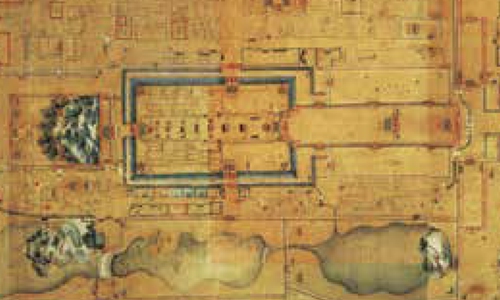Pingyao - The Most Intact County Seat of the Ming and Qing
Pingyao Ancient City in North China's Shanxi Province is a famous cultural city with a history of more than 2,700 years. The ancient city we see today was shaped by expansion carried out in the 3rd year of the Hongwu Period of the Ming Dynasty (1368-1644). The ancient town is about 2.25 square kilometers in size with the south street as the axis.
According to Chinese ancient traditional city plans, temples, offices, platforms, and other structures are regularly distributed along the central axis; the city tower is located at the center of the city, and the south street, the east-west street, the city god street and the government office street constitute several T-shaped commercial streets larger than those in traditional towns, showing prosperous local commerce and trade.
The names of other streets and lanes are all old names of the Ming and Qing (1644-1911) dynasties, and their patterns include crisscross and T-shaped streets, lanes and bridleways. Local people call them "four main streets, eight narrow streets and 72 winding lanes."
Speaking of Pingyao, "Shanxi merchants" and "exchange shops" must be mentioned because it is one of the places where "Shanxi merchants" originated and the place where the "Rishengchang" exchange, China's first embryonic modern bank, was established. Under the push of the "Rishengchang" exchange shop, the exchange shop industry of Pingyao and even Shanxi developed rapidly. In the peak period in the late Qing Dynasty, Shanxi's exchange shops had more than 400 branches in 85 domestic cities, and even in overseas cities such as Tokyo, Osaka and Kobe in Japan, Inchon in Korea, Singapore in Southeast Asia and Moscow in Russia.
About the book
Chinese Architecture Written by Cai Yanxin Published by China Intercontinental Press
Pingyao Ancient City in North China's Shanxi Province is a famous cultural city with a history of more than 2,700 years. The ancient city we see today was shaped by expansion carried out in the 3rd year of the Hongwu Period of the Ming Dynasty (1368-1644). The ancient town is about 2.25 square kilometers in size with the south street as the axis.
According to Chinese ancient traditional city plans, temples, offices, platforms, and other structures are regularly distributed along the central axis; the city tower is located at the center of the city, and the south street, the east-west street, the city god street and the government office street constitute several T-shaped commercial streets larger than those in traditional towns, showing prosperous local commerce and trade.
The names of other streets and lanes are all old names of the Ming and Qing (1644-1911) dynasties, and their patterns include crisscross and T-shaped streets, lanes and bridleways. Local people call them "four main streets, eight narrow streets and 72 winding lanes."
Speaking of Pingyao, "Shanxi merchants" and "exchange shops" must be mentioned because it is one of the places where "Shanxi merchants" originated and the place where the "Rishengchang" exchange, China's first embryonic modern bank, was established. Under the push of the "Rishengchang" exchange shop, the exchange shop industry of Pingyao and even Shanxi developed rapidly. In the peak period in the late Qing Dynasty, Shanxi's exchange shops had more than 400 branches in 85 domestic cities, and even in overseas cities such as Tokyo, Osaka and Kobe in Japan, Inchon in Korea, Singapore in Southeast Asia and Moscow in Russia.
About the book
Chinese Architecture Written by Cai Yanxin Published by China Intercontinental Press


